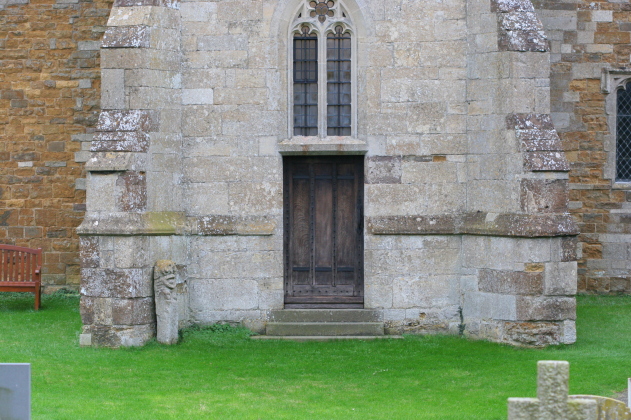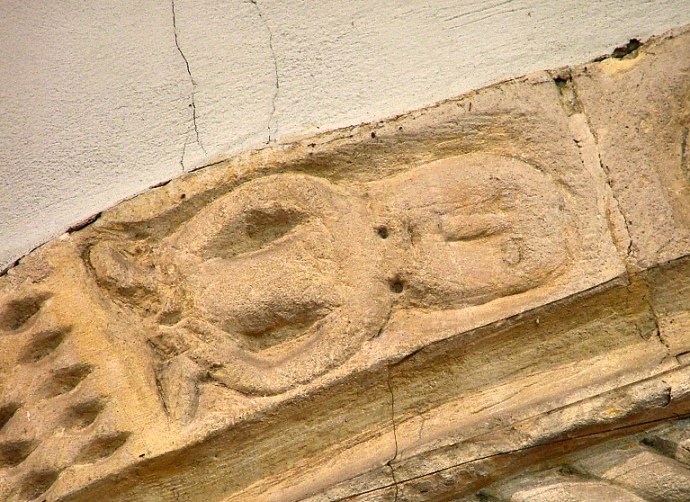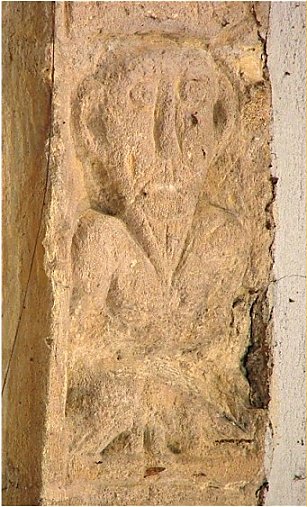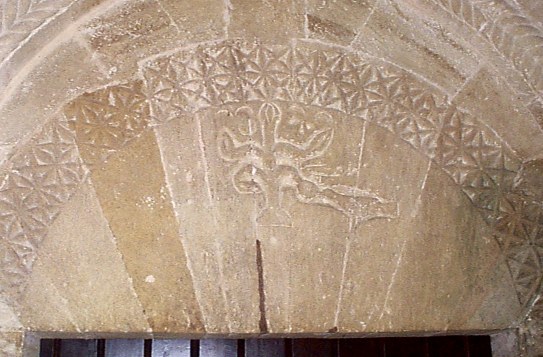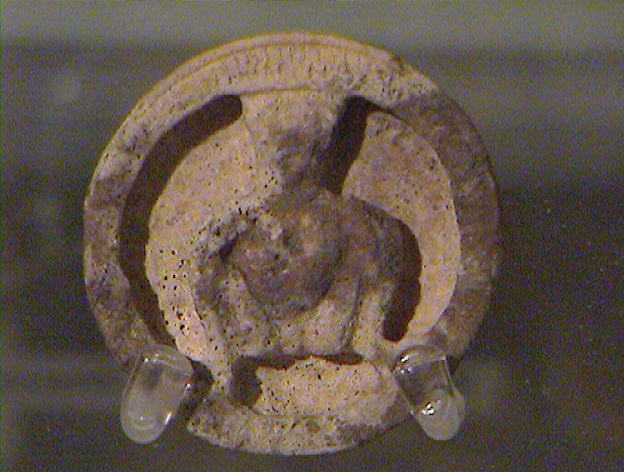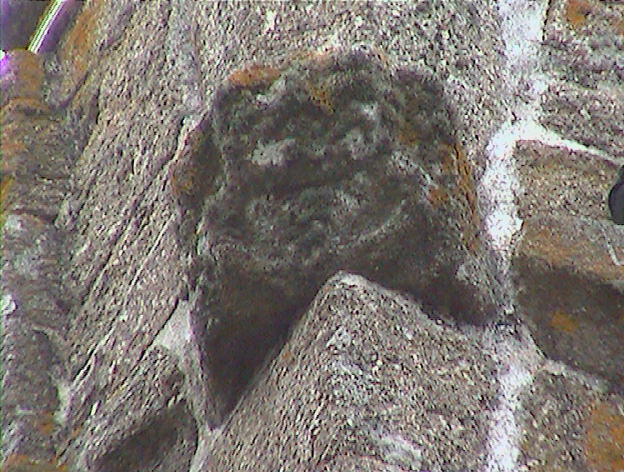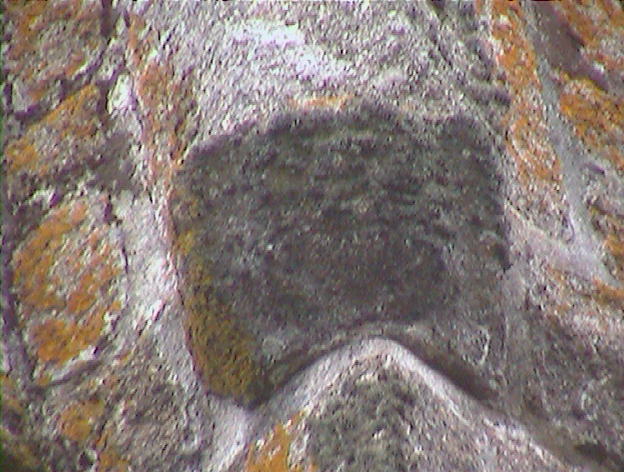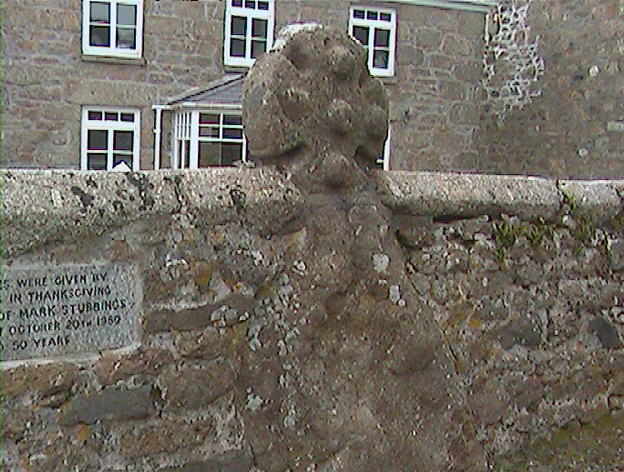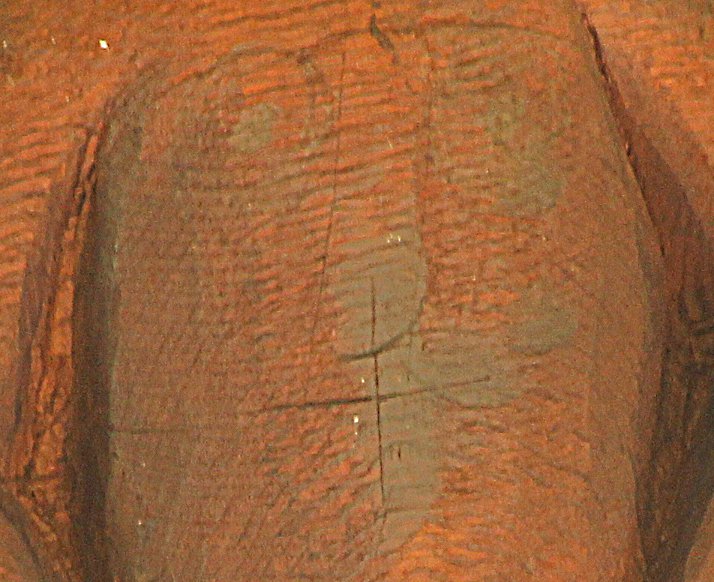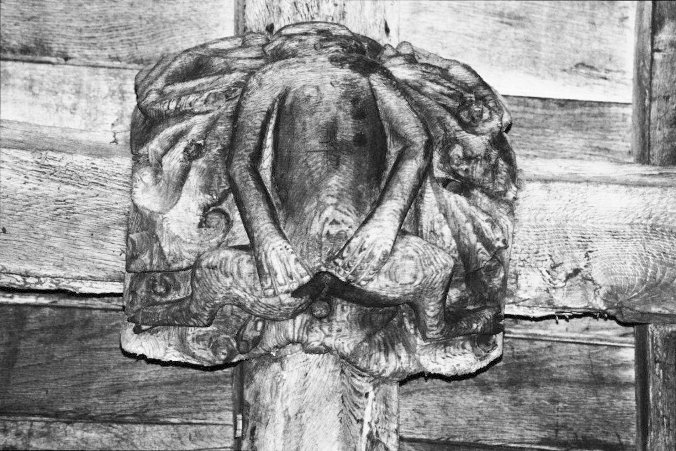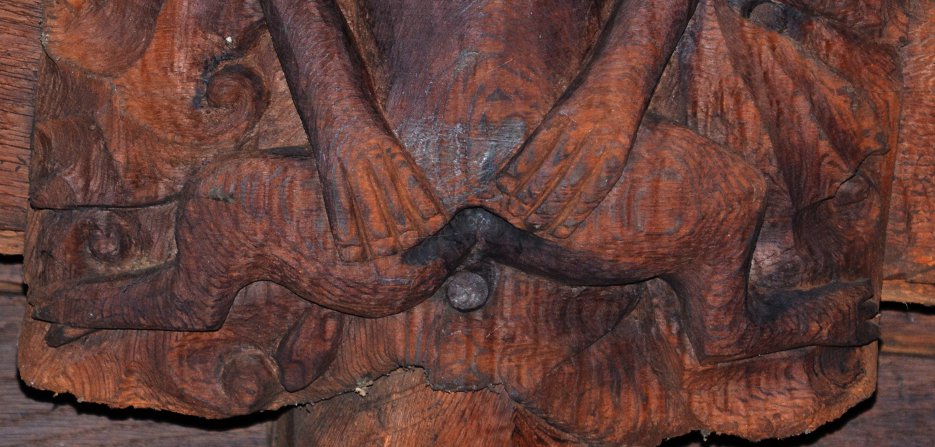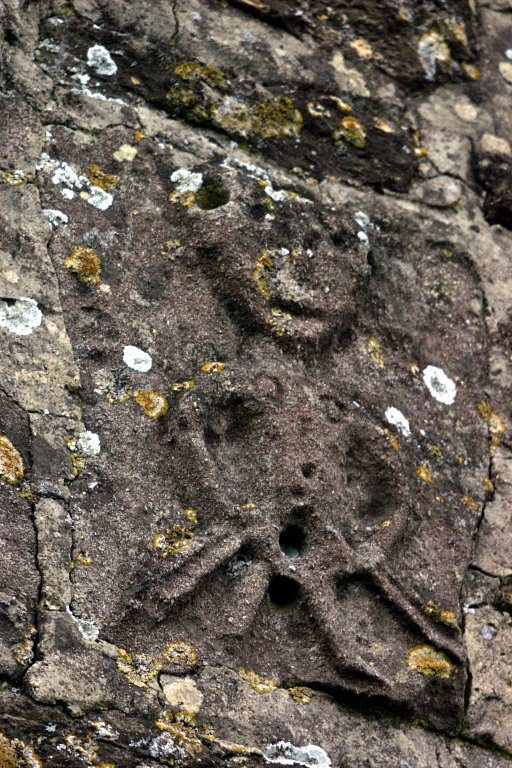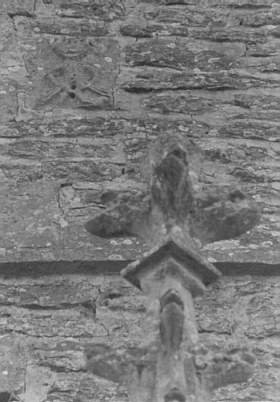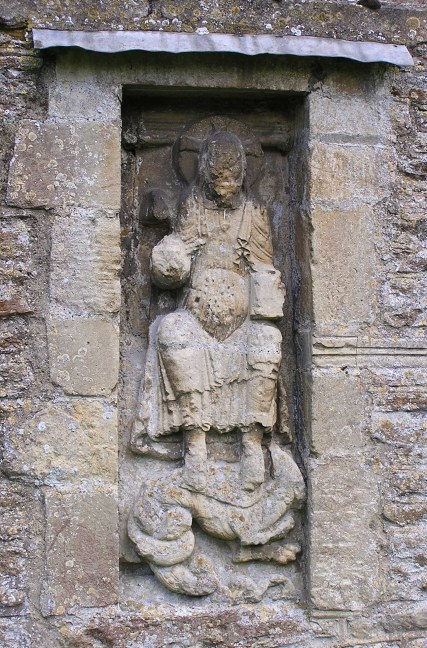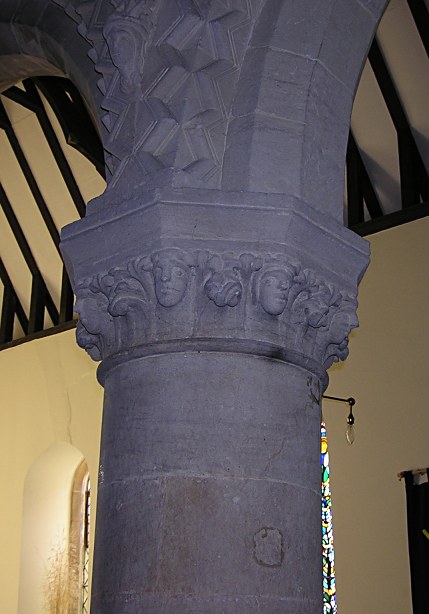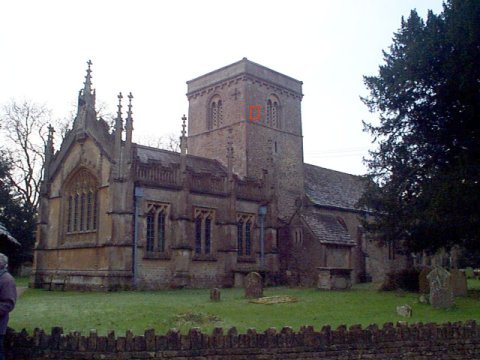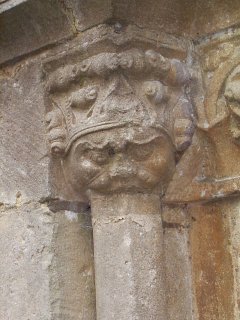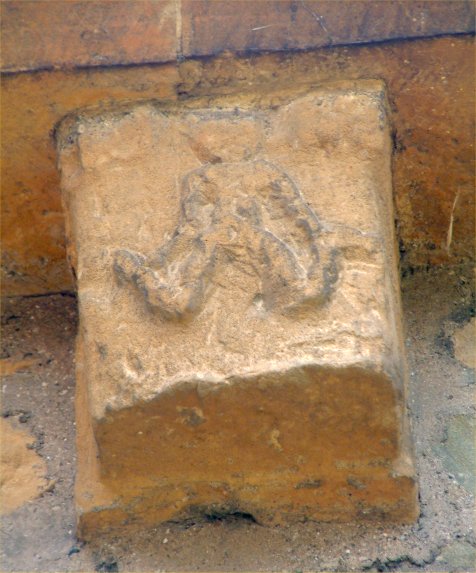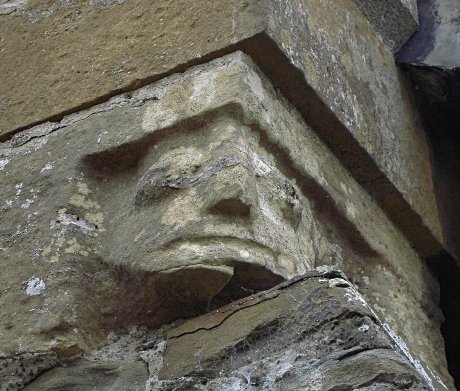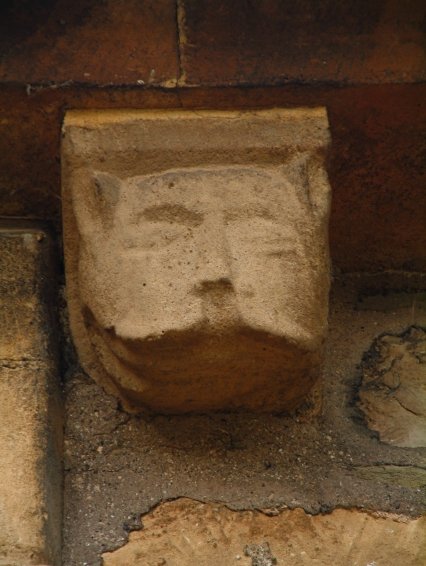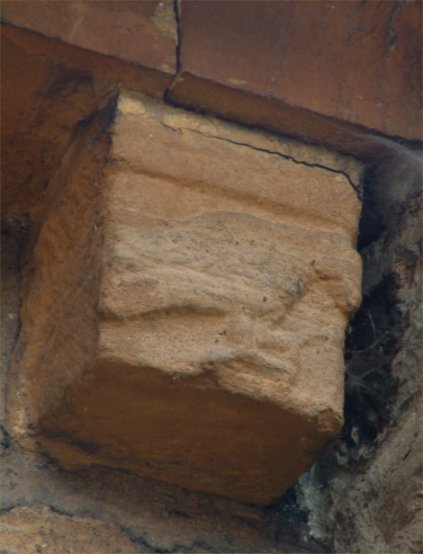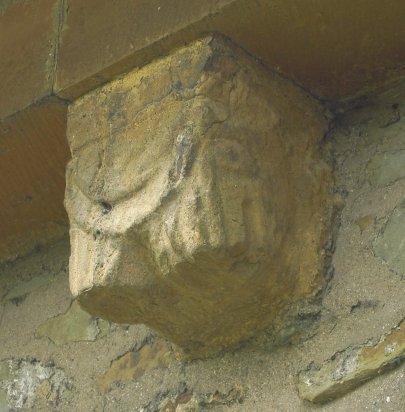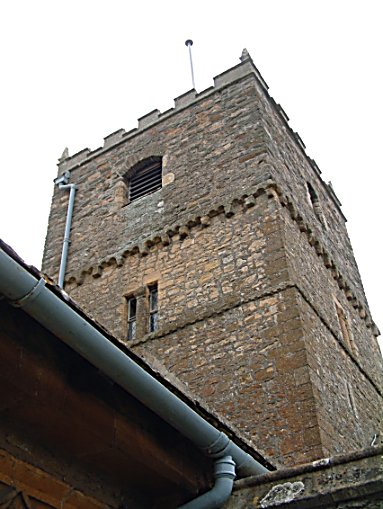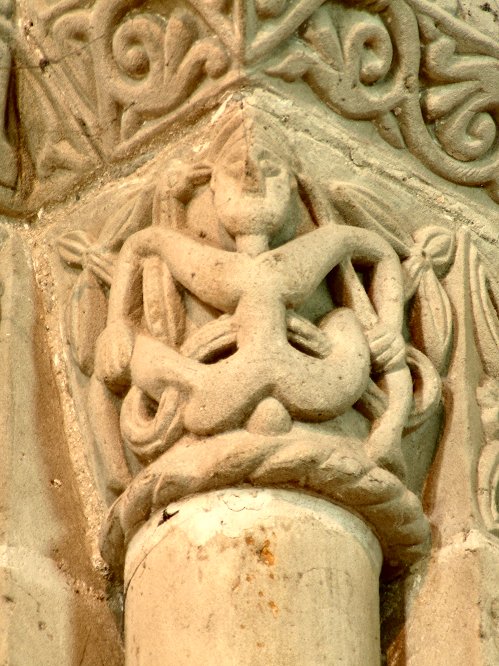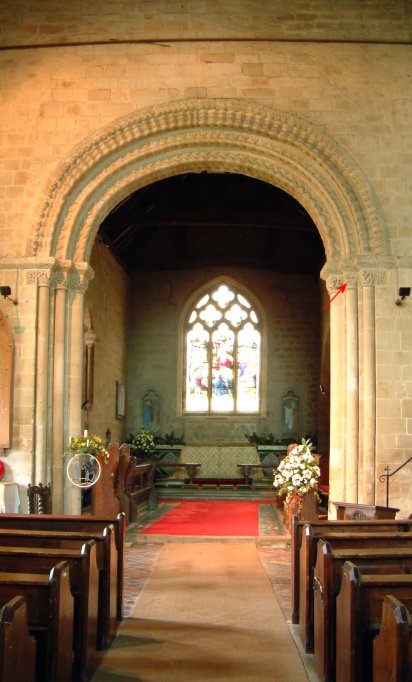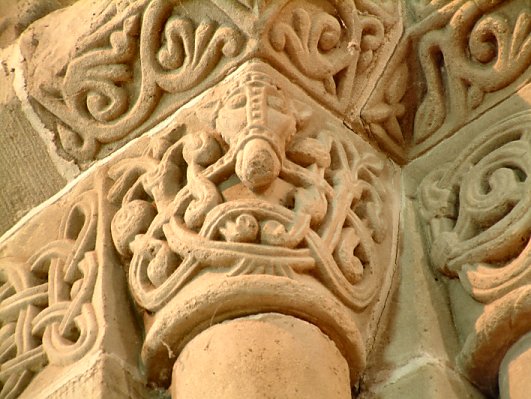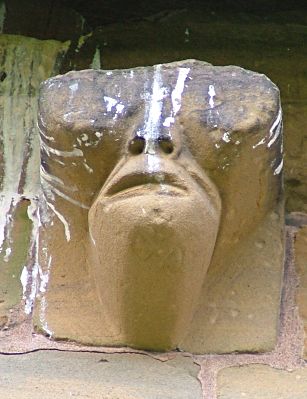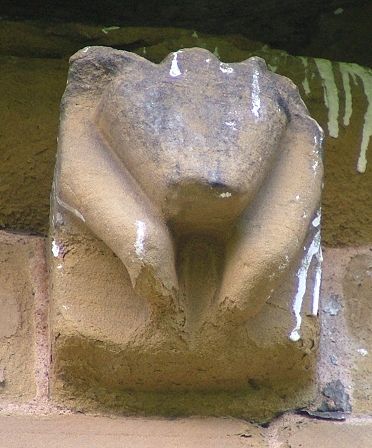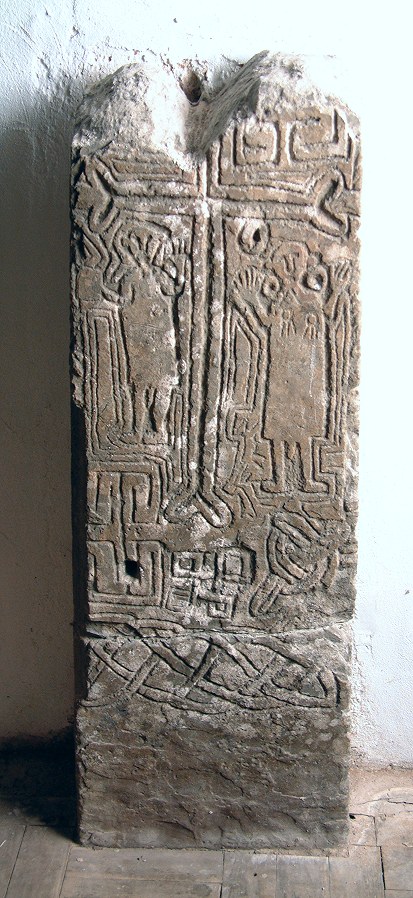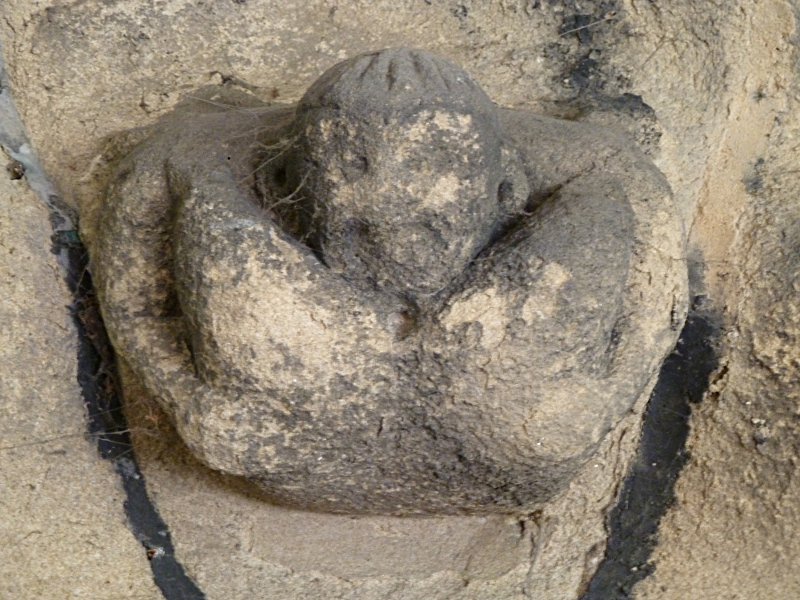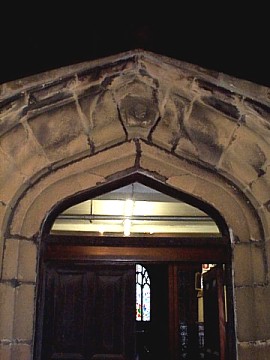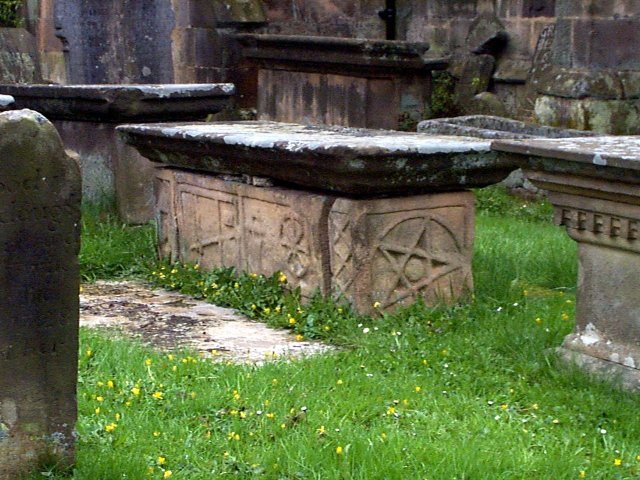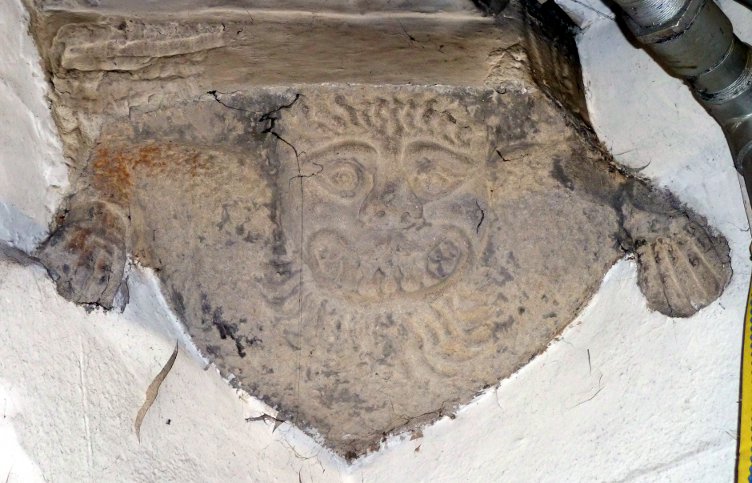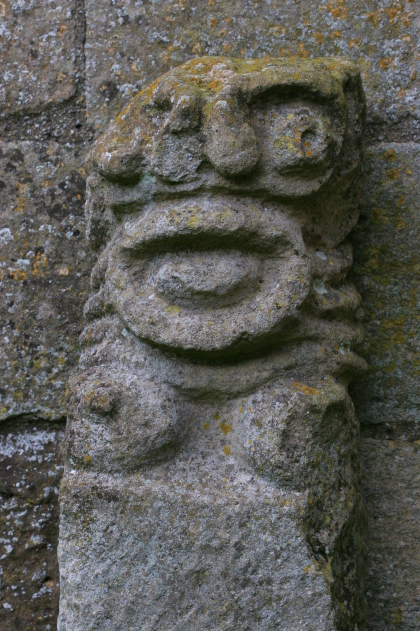
This figure lies in the churchyard of All Saints church in Braunston, Rutland and is commonly referred to as “The Goddess”. The church website1 refers to the carving as a “Shelagh”. The stone on which the carving resides was used as a doorstep until the 1920’s when it was uprooted and the carving found on the underside. (for another carving found face down see Llandrindod Wells) The church has been much altered over the years but still retains a romanesque doorway
The figure
Is this a sheela na gig?
Due to the lack of genitalia though we would have to discount this as a sheela na gig. Saying that it does appear to be medieval in style IMHO. There is a tradition of the figure being refered to as a sheela though. It is also mentioned in the Victoria County History for Rutland.
John Harding
1 http://www.acny.org.uk/venue.php?V=10834 Accessed 18 November 2007
All photographs courtesy Robert Miller, copyright Robert Miller
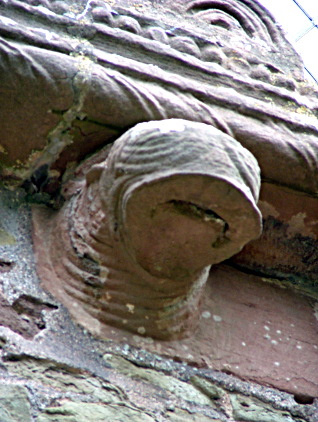
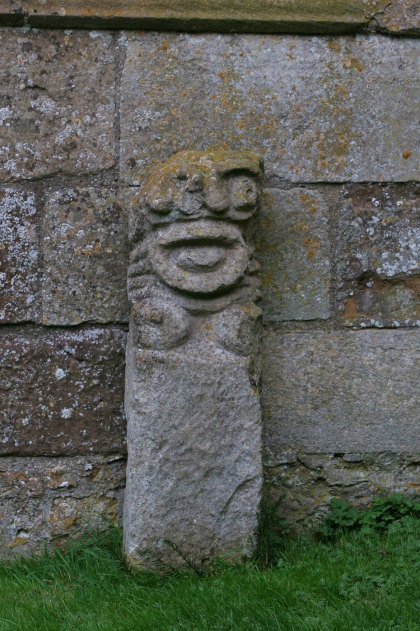
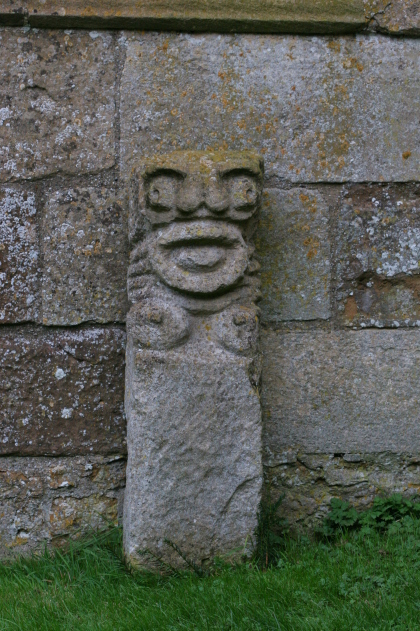
This is an artist’s impression of what the carving may have looked like originally. The remnants of the left eye and double nose can still be seen on the original figure.
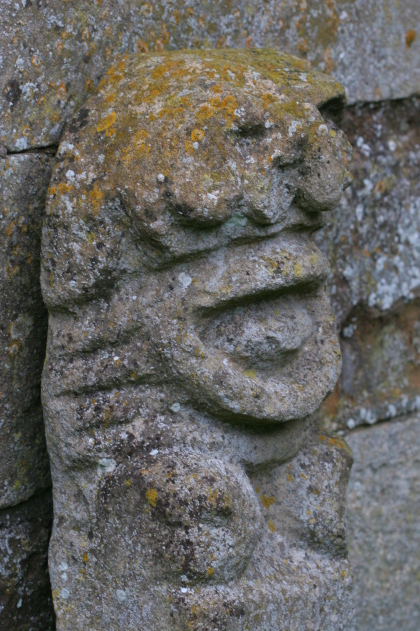
Wikipedia article on the figure
http://en.wikipedia.org/wiki/Braunston-in-Rutland
Braunston at British History on line
http://www.british-history.ac.uk/report.aspx?compid=66196
Mentions the figure as a sheela na gig
Bob Trubshaw’s article on the figure
http://www.indigogroup.co.uk/edge/braunstn.htm
